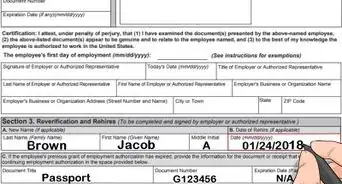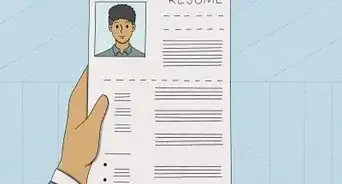This article was co-authored by Clinton M. Sandvick, JD, PhD. Clinton M. Sandvick worked as a civil litigator in California for over 7 years. He received his JD from the University of Wisconsin-Madison in 1998 and his PhD in American History from the University of Oregon in 2013.
There are 14 references cited in this article, which can be found at the bottom of the page.
This article has been viewed 25,310 times.
Workplace harassment is a type of employment discrimination. If you are harassed on the basis of a protected characteristic, such as race or disability, then you can sue for compensation. To bring a lawsuit, you should meet with a lawyer to discuss your case. Anti-harassment laws do not protect against the occasional joke or offensive comment. However, if the harassment is sufficiently severe, then you can sue. Only a qualified attorney can analyze your case properly.
Steps
Documenting the Harassment
-
1Identify your protected characteristic. You might think that any harsh or threatening conduct is “harassment.” However, workplace harassment has a specific legal meaning. You can sue for harassment if the abuse is based on a “protected characteristic.”[1] Under federal law, the protected characteristics are:[2]
- race
- color
- national origin
- sex
- religion
- age (if 40 or older)
- disability
- genetic information
-
2Talk to the offender. You might not want to talk to the person who has harassed you. However, there are good legal reasons to at least make an effort. In your lawsuit, you must show that the harassment was unwelcome.[3] Sometimes people use sexual jokes to flirt, and you need to let the offender know that the conduct is not welcome.
- You are not required to talk to the offender, especially if you fear for your physical safety.
- If you don’t feel comfortable talking in person, then think about sending an email or note. Keep a copy for your records.
Advertisement -
3Write down your memories. In order to sue, you will need evidence of the harassment. In particular, you will need to show that the harassment was so widespread and intense that your workplace became hostile and abusive.[4] Only a lawyer can tell you if the harassment was so bad that it is illegal. However, your first step is to document as best you can all offensive conduct.
- Sit down and document every example of offensive jokes, epithets, slurs, mockery, threats, intimidation, or offensive objects or pictures.[5]
- Also write down the names of people who saw the harassment. You might need them later on as witnesses when you bring your lawsuit.
-
4Save emails and voicemails. You also should save all communications from the offender. Print out copies of your emails so that you don’t accidentally delete them. Also save voicemail messages.
- You might be afraid that someone might delete your voicemail. To protect yourself, you can play the voicemail and record it using your smart phone or a tape recorder.
-
5File a grievance. You should file a formal grievance with your employer. Before you can file a lawsuit for workplace harassment, you typically must give your employer a chance to fix the situation. This means you must give your employer notice of the harassment.
- Your company should have an established grievance process. Look in your employee manuals or contact Human Resources.[6]
- You might have to fill out a grievance form and meet with your immediate supervisor. If your immediate supervisor is the harasser, then you will meet with someone else higher up in the company.
- Share copies of your notes and emails so that your supervisor understands the full extent of the harassment.
- If you work in a small business which does not have a grievance process or a Human Resources Department, then you can put your boss on notice of the harassment by writing a letter.
-
6Get legal advice. Suing for workplace harassment is complicated. You will need someone to guide you through the process. Accordingly, you should meet with a lawyer. A lawyer can listen to your situation and help you understand your options.
- To find an employment lawyer, contact your local or state bar association, which should run a referral program.
- Once you have a referral, call up the lawyer and schedule a consultation. Most lawyers offer half hour consultations for free or for a reduced price.
-
7Think about hiring the lawyer. If you intend to bring a lawsuit, then you really need to hire a lawyer. During your consultation, you should ask the attorney about different fee arrangements. Be upfront about your budget and see if the lawyer can work around it.
- For example, the lawyer might be willing to represent you on “contingency.” Under this arrangement, the lawyer only gets paid if you win your lawsuit or get a settlement. The lawyer takes a percentage of your award, typically around a third.[7]
- You might also be able to win attorneys’ fees. If you win your harassment lawsuit, then the court has the power to award attorneys’ fees. This means that the defendant has to pay for your lawyer.[8]
- Also ask about “limited scope representation.” With this arrangement, the lawyer only does the work that you give him or her. For example, you could hire a lawyer to represent you at trial but handle all of the pre-trial work on your own. Most states allow lawyers to offer limited scope representation.
- Finally, you could also ask about legal aid organizations. If you have no money at all and a lawyer is unwilling to represent you on contingency, then you might be able to get a legal aid organization to help you. Legal aid organizations provide free legal services to people with low incomes. Ask the lawyer if he or she knows of any legal aid organizations nearby.
Complaining to the EEOC
-
1Find your nearest EEOC office. Before you can bring a lawsuit, you need to file an “administrative charge.” You can file this charge with the federal Equal Employment Opportunity Commission (EEOC) or with an equivalent state agency.
- You can file a charge by visiting any of the EEOC’s 53 field offices. To find your nearest office, check the map at http://www.eeoc.gov/field/index.cfm. You should call ahead to check when the office is open and whether you need an appointment.
- You can’t file a charge with the EEOC by phone. However, you can call ahead and give some of your personal information over the phone. The number is 1-800-669-4000.
- You shouldn’t wait. You only have 180 days to file your charge. If your state also has anti-discrimination laws, then the deadline can be extended to 300 days.[9] Nevertheless, you shouldn’t wait too long.
-
2Write a letter. You can also file a charge by writing a letter. Make sure that the letter contains the following information:[10]
- your name, address, and telephone number
- the name and contact information of your employer
- the number of employees your employer has
- a short description of the harassment
- when the harassment took place
- what protected characteristic motivated the harassment
- your signature
-
3Mail the letter. You should mail the letter to the EEOC field office nearest you. Send it certified mail, return receipt requested.
- Also save a copy for your own records.
-
4Find your state agency instead. If your state has anti-discrimination laws which protect against harassment, then you could file your administrative charge with your state agency instead. In some situations, only federal law will apply.
- For example, your employer might only have 10 employees. To be covered by federal law, it needs to have at least 15 employees (or at least 20 if you are claiming harassment based on age).[11]
- To find your state agency, search the Internet for “your state” and “harassment discrimination.” You should find the state agency that handles these complaints. It will probably be called the Department of Human Rights or Department of Labor.
-
5File a state administrative charge. Your state agency will probably ask for similar information as the EEOC. The complaint process will vary by state, but you generally will be able to file in the following ways:
- Walk in. You can visit one of your state’s offices and complete an administrative charge. Staff will listen to your complaint to determine whether or not you are covered by the state law.
- By letter. You can write a letter to your state agency. You should include all of the information that you would include in a letter to the EEOC. Your state agency may also have a form you can download and complete.
- Online. Your state agency may have an online form you can complete. The agency will typically follow up to gather more information.
Bringing a Lawsuit
-
1Get a “right to sue” letter. Before you can file a harassment lawsuit in court, you need to get a “Notice-of-Right-to-Sue” letter from the EEOC (or your equivalent state agency). If you filed with the EEOC, then you generally will get the letter after the agency has closed its investigation.[12]
- Once you receive the letter, you have 90 days to bring a lawsuit in court.[13]
-
2Draft a complaint. You start a lawsuit by filing a complaint with the court. In the complaint, your lawyer identifies you and the defendant and also explains the harassment. You also make your demand for monetary compensation in the complaint.[14]
- Your lawyer should handle the complaint, as well as everything else related to the trial. Make sure to ask for a copy of all court documents filed on your behalf.
- If you don’t have a lawyer, then you will need to draft the complaint yourself. You should stop into the courthouse and ask the court clerk if there is a printed “fill in the blank” form you can use. In federal court, there often will be.
-
3File the complaint. You have to file the complaint with the court and pay a filing fee. The amount of the fee will differ depending on the court. In federal court, you will typically pay several hundred dollars.[15]
- If you bring your lawsuit in federal court, then your lawyer will file the documents electronically. If you are representing yourself, you can still generally file in person, though you should talk to the court clerk about this.
-
4Send notice to the defendant. You must notify the defendant of the lawsuit. Your lawyer can do this by sending the defendant a copy of the complaint along with a summons, which gives the defendant a deadline for responding to your lawsuit.
- If you need to serve notice because you don’t have a lawyer, then ask the court clerk for what methods of service are acceptable.
- Generally, you can give notice by hiring a private process server to make delivery. You can find process servers in the phone book. They generally charge $45-75 per service.[16]
- You can also typically have someone 18 or older hand-deliver the notice. This person cannot be a party to the lawsuit.
-
5Prepare for your trial. The pre-trial preparation is lengthy. For example, you and the defendant will engage in a fact-finding phase called “discovery.” During discovery, you will swap documents and also answer questions under oath.
- You will also probably file motions with the court. A motion is a request for the court to do something. One common motion is a motion for summary judgment, which you can expect the defendant to file.
- In a summary judgment motion, the defendant tries to get the case thrown out by arguing that there are no factual issues in dispute and that the law commands a result in the defendant’s favor.[17] Your lawyer will have to draft a legal brief and argue it before the judge.
- You can also expect to be in and out of court many times during the pretrial period. You might have an argument with the defendant about handing over a copy of a document. Also, the judge might sometimes schedule “status hearings,” where you simply talk about how close you are to being ready for trial.
- This pretrial period can last over a year. If you do not want to wait that long, then you should think about negotiating a settlement.
-
6Consider settling outside of court. You can get compensated for your injuries and avoid trial by settling the lawsuit. The EEOC or your state agency might encourage you to settle your dispute with your employer. The EEOC, for example, may offer mediation free of charge.[18] However, you can also enter into negotiations on your own.
- Settlement has many advantages. You can often settle a dispute in mediation much faster than bringing a lawsuit. You can also avoid the unpredictability of trial. Furthermore, there is no appeal; you can be sure that you can keep the money that you receive.
- You should talk with a lawyer about settlement. A lawyer can help you evaluate any settlement offer and can also help you make a solid counteroffer if you want more money.
-
7Present your case at trial. As the person bringing the lawsuit, you will go first. You will present your evidence, usually in the form of witnesses and documents. Your lawyer will ask the witnesses questions and then the defendant’s lawyer will get to cross-examine them.
- Common witnesses include any co-worker who observed the harassment. They will testify as to what the harasser said or did, and when it happened.
- Your boss will also be a witness. One focus of the trial will be what steps your boss took to address the harassment after you notified them of it. Your lawyer will ask your boss questions to uncover whether your boss took your complaints of harassment seriously.
-
8Testify on your behalf. As the victim of the harassment, you will have to testify and let the judge and jury know what abuse you have suffered. Reliving the harassment publicly can be very uncomfortable. Also, you will have to testify in front of your harasser. To be an effective witness, you should remember the following tips:
- Look at the attorney who is asking you questions. When you answer, turn to the jury and try to make eye contact.[19]
- Listen closely to the question and answer the question asked. If you don’t understand a question, then you should ask the lawyer for clarification.
- If you don’t know the answer, then don’t guess.
- Try to stay calm. This could be difficult, but you don’t want to get into a disagreement with the defendant’s lawyer.
-
9Think about bringing an appeal. If you lose your lawsuit, then you should talk with your lawyer about bringing an appeal. An appeal will take probably a year, but it will be your only way to get another trial.
- You won’t have much time to file your Notice of Appeal form—usually 30 days or less in state court. If you are in federal court, then you will have 60 days from the date final judgment is entered.[20]
References
- ↑ http://www.employmentlawfirms.com/resources/employment/labor-relations/how-to-prove-harassment-the-workplace
- ↑ http://www.eeoc.gov/laws/types/harassment.cfm
- ↑ http://www.nolo.com/legal-encyclopedia/suing-harassment-discrimination.html
- ↑ http://www.eeoc.gov/laws/types/harassment.cfm
- ↑ http://www.eeoc.gov/laws/types/harassment.cfm
- ↑ http://www.nolo.com/legal-encyclopedia/suing-harassment-discrimination.html
- ↑ http://www.workplacefairness.org/attyfees
- ↑ http://www.workplacefairness.org/attyfees
- ↑ http://www.eeoc.gov/employees/howtofile.cfm
- ↑ http://www.eeoc.gov/employees/howtofile.cfm
- ↑ http://www.eeoc.gov/laws/types/harassment.cfm
- ↑ http://www.eeoc.gov/employees/lawsuit.cfm
- ↑ http://www.eeoc.gov/employees/lawsuit.cfm
- ↑ http://nationalparalegal.edu/public_documents/courseware_asp_files/researchLitigation/PreTrialPractice/Summons.asp
- ↑ https://www.flsd.uscourts.gov/?page_id=2396
- ↑ http://www.serve-now.com/about-process-serving
- ↑ https://www.law.cornell.edu/rules/frcp/rule_56
- ↑ http://www.eeoc.gov/employees/mediation.cfm
- ↑ http://www.pimall.com/nais/n.testify.html
- ↑ https://www.law.cornell.edu/rules/frap/rule_4




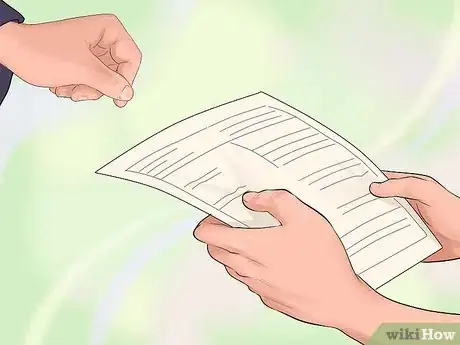

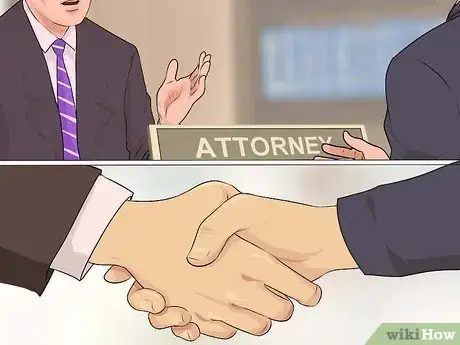

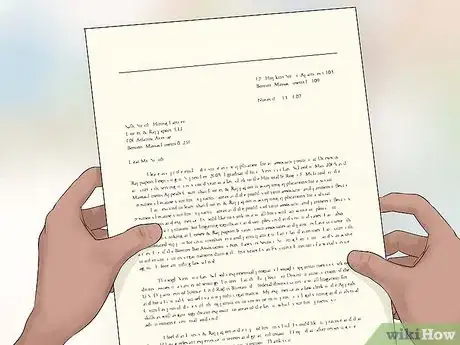





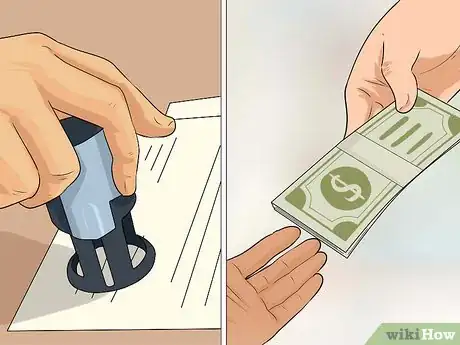

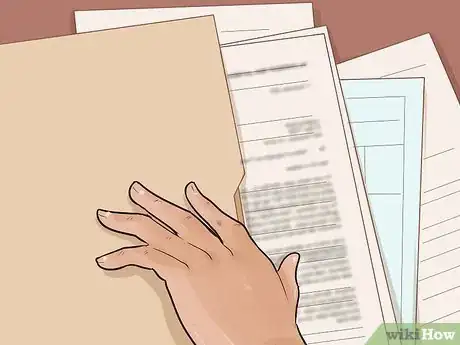



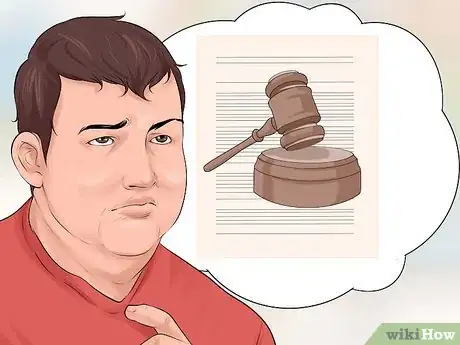










-Status-Step-6.webp)

